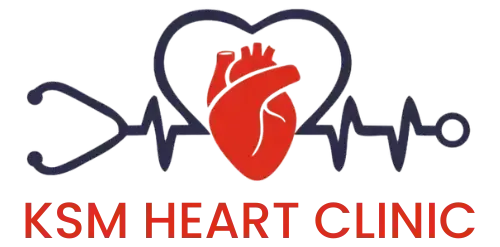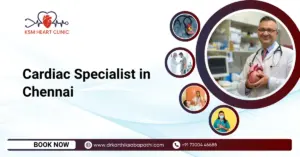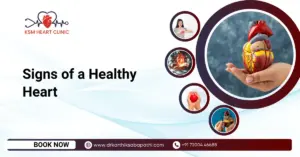Heart bypass surgery is a major step toward treating blocked arteries and restoring proper blood flow. But recovery doesn’t end with the procedure. A carefully planned diet after heart bypass is one of the most important factors in promoting healing and protecting your heart long-term.
Understanding the Role of Diet in Heart Recovery
Bypass surgery improves circulation by creating a new path around blocked arteries. After this life-saving operation, your body needs support—especially from the food you eat. The right nutrition helps reduce inflammation, maintain healthy cholesterol levels, and prevent future complications.
Key Elements of a Heart-Healthy Diet
A well-balanced diet after heart bypass includes natural, unprocessed foods that support heart function and overall health. Here’s what your meals should include:
- Whole Grains: Brown rice, oats, and whole wheat bread support digestion and help manage cholesterol.
- Lean Proteins: Fish, legumes, tofu, and skinless poultry offer the nutrients needed for tissue repair.
- Colorful Vegetables and Fruits: Rich in antioxidants, they help fight oxidative stress and aid recovery.
- Healthy Fats: Moderate use of olive oil, avocado, nuts, and seeds helps improve heart function.
- Low-Sodium Foods: Reducing salt intake supports blood pressure management.
What to Avoid for Better Recovery
Avoiding certain foods is just as important as adding healthy ones. Your diet after heart bypass should strictly limit:
- Fried and Fatty Foods: These raise bad cholesterol and increase strain on your heart.
- Highly Processed Items: Packaged snacks and ready meals often contain excessive salt and unhealthy fats.
- Sugary Beverages and Sweets: High sugar intake can lead to weight gain and blood sugar spikes.
Managing Common Post-Surgery Symptoms with Nutrition
Recovery may include fatigue, appetite changes, or mild swelling. A well-structured diet after heart bypass can help ease these issues by:
- Offering small, nutrient-rich meals throughout the day
- Keeping hydration levels up with water and low-sugar drinks
- Including fiber-rich foods to support digestion and metabolism
Diet Chart for Heart Patients After Angioplasty
For those who have undergone angioplasty, eating habits must also shift to support healing. A proper diet chart for heart patients after angioplasty should emphasize:
- Fresh vegetables, whole grains, and plant-based proteins
- Reduced sodium and minimal saturated fats
- Regular meals that maintain energy levels and blood sugar
Sample Day:
- Breakfast: Whole-grain toast with almond butter and sliced banana
- Lunch: Quinoa salad with chickpeas and mixed greens
- Snack: Low-fat yogurt or a handful of walnuts
- Dinner: Steamed vegetables with lentil soup and brown rice
Following a diet chart for heart patients after angioplasty can significantly lower the risk of further artery blockages.
Diet for Heart Patients After Angioplasty: What Matters Most
Healing after angioplasty requires long-term commitment to dietary changes. A consistent diet for heart patients after angioplasty supports overall heart function and reduces inflammation. Prioritize:
- Unprocessed, homemade meals
- Heart-friendly fats like flaxseeds and olive oil
- Cutting back on red meats and fried foods
Even moderate dietary changes can result in better recovery and lower the chance of complications.
Best Diet for Heart Patients After Stent Placement
A diet for heart patients after stent placement focuses on protecting blood vessels and preventing further narrowing. To keep your arteries clear:
- Base your meals around vegetables, beans, and whole grains
- Choose lean protein sources such as legumes, tofu, and grilled fish
- Reduce high-cholesterol foods and sodium-heavy dishes
Including antioxidant-rich options like berries, green leafy vegetables, and green tea can further strengthen your recovery efforts.
What to Avoid After Stent or Angioplasty
Regardless of whether you’ve had a stent or angioplasty, some foods should be avoided to protect your heart:
- Red and Processed Meats: Often high in saturated fats and preservatives
- Salty Snacks and Fast Foods: Major contributors to high blood pressure
- Sugary Drinks: Can lead to weight gain and poor blood sugar control
A personalized diet for heart patients after stent helps reduce inflammation, improves heart function, and maintains healthy blood flow.
How Diet Supports Recovery in the Long Run
Nutrition plays a central role not just in healing, but in building a sustainable lifestyle. A well-thought-out diet after heart bypass helps:
- Keep blood pressure and cholesterol in check
- Maintain a healthy body weight
- Provide the energy needed for daily activity
- Strengthen your cardiovascular system over time
Whether you’re following a diet for heart patients after angioplasty, using a structured diet chart for heart patients after angioplasty, or planning meals post-stent, your food choices are a powerful tool for heart protection.
Final Thoughts
Recovery after heart surgery or procedures like angioplasty or stent placement doesn’t stop in the hospital. The foundation of your healing lies in a balanced, consistent eating routine. Dr. Karthik Sabapathi, a leading cardiac specialist, emphasizes that a personalized diet after heart bypass, along with the right diet for heart patients after stent or angioplasty, is key to a healthier, stronger life. Following his expert guidance can empower you to make the best food choices and support long-term heart health.
Read also: Exercise for Heart Health




